-
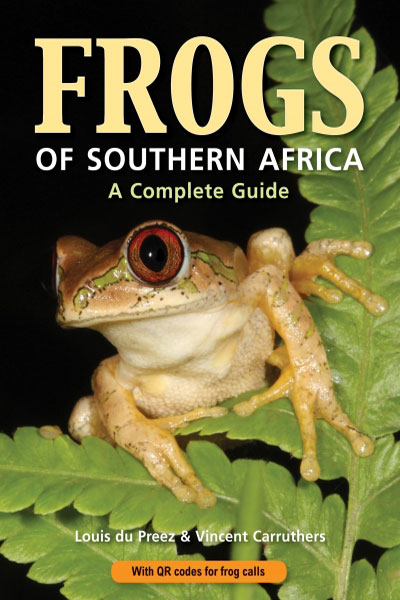 This new edition (with a slight name change) has been thoroughly updated to reflect taxonomic changes based on the most recent research and DNA studies and includes 12 new species and more than 130 new images. All 169 southern African frog species, and their tadpole stages, are fully described, along with their conservation status, calls, habitat, and habits.
This new edition (with a slight name change) has been thoroughly updated to reflect taxonomic changes based on the most recent research and DNA studies and includes 12 new species and more than 130 new images. All 169 southern African frog species, and their tadpole stages, are fully described, along with their conservation status, calls, habitat, and habits. -
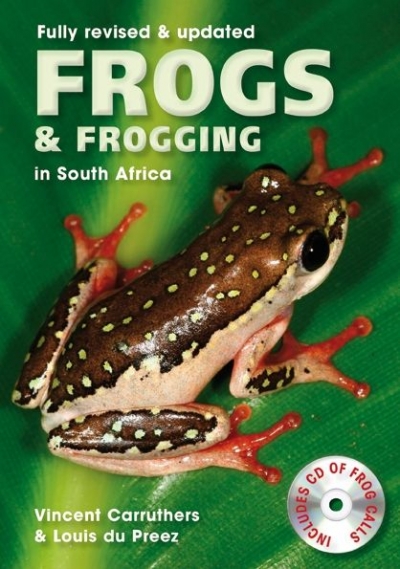 Frogs & Frogging in South Africa offers amateur froggers an accessible and practical introduction to frog identification. This edition of the highly popular guide has been expertly revised and fully updated to reflect the latest advances in taxonomy and nomenclature.
Frogs & Frogging in South Africa offers amateur froggers an accessible and practical introduction to frog identification. This edition of the highly popular guide has been expertly revised and fully updated to reflect the latest advances in taxonomy and nomenclature. -
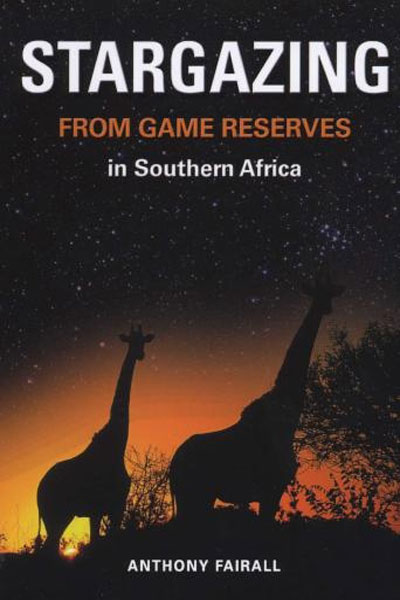 Stargazing from game reserves in Southern Africa offers visitors to game and nature parks an exciting night-time activity in the bush, giving them an opportunity to turn their binoculars skyward after dark.
Stargazing from game reserves in Southern Africa offers visitors to game and nature parks an exciting night-time activity in the bush, giving them an opportunity to turn their binoculars skyward after dark. -
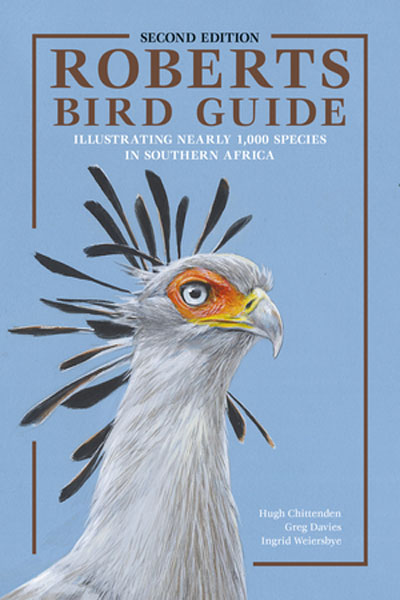 Covering nearly 1,000 species found in southern Africa (south of the Cunene and Zambezi rivers), this 570-page revised edition of Roberts Bird Guide features stunning new artwork detailing seasonal, age and sexual differences in approximately 240 annotated colour plates ...
Covering nearly 1,000 species found in southern Africa (south of the Cunene and Zambezi rivers), this 570-page revised edition of Roberts Bird Guide features stunning new artwork detailing seasonal, age and sexual differences in approximately 240 annotated colour plates ... -
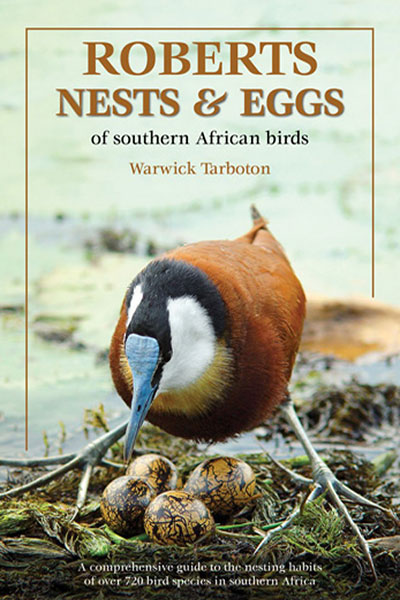 This new field guide deals with the nesting habits of the 730 bird species known to breed in southern Africa. It is set out in a standard field-guide format (text pages facing colour plates), covering 4–5 species per double-page spread. The information given is an up-to-date summary of what is known about the nesting habits of each species: where they nest, when they nest, what the nest looks like, how many eggs they lay, how long these take to hatch, etc.
This new field guide deals with the nesting habits of the 730 bird species known to breed in southern Africa. It is set out in a standard field-guide format (text pages facing colour plates), covering 4–5 species per double-page spread. The information given is an up-to-date summary of what is known about the nesting habits of each species: where they nest, when they nest, what the nest looks like, how many eggs they lay, how long these take to hatch, etc. -
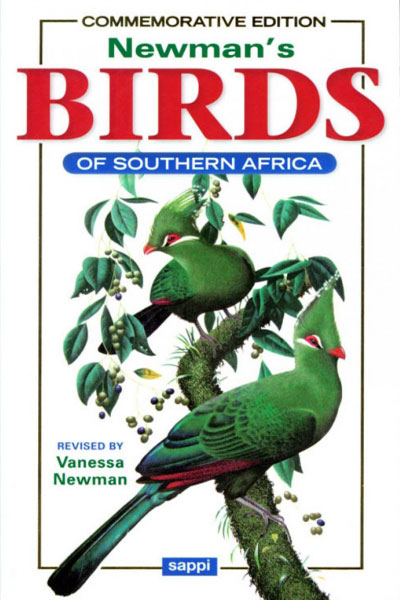 This commemorative tenth edition celebrates the contribution of the late author, Kenneth Newman, fully revised and updated by his daughter, Vanessa Newman, to reflect the latest research, taxonomy, and common names. Newman's Birds of Southern Africa, a leading field guide in the region, illustrates and fully describes all the birds recorded from the Antarctic to the Zambezi River.
This commemorative tenth edition celebrates the contribution of the late author, Kenneth Newman, fully revised and updated by his daughter, Vanessa Newman, to reflect the latest research, taxonomy, and common names. Newman's Birds of Southern Africa, a leading field guide in the region, illustrates and fully describes all the birds recorded from the Antarctic to the Zambezi River. -
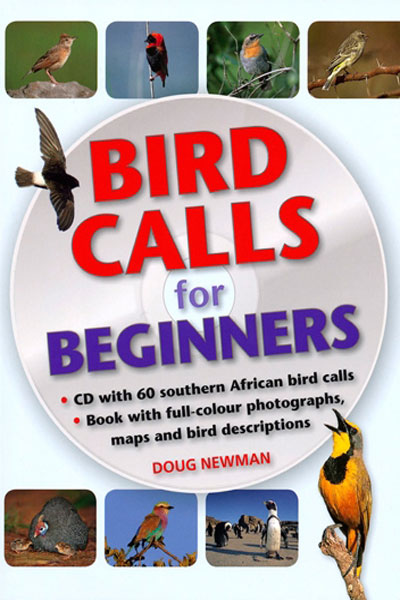 Bird Calls for Beginners, by Doug Newman features 60 common southern African bird calls; the book shows colour photographs of these birds, distribution maps and interesting text about their habits, feeding and nesting routines, and describes their calls.
Bird Calls for Beginners, by Doug Newman features 60 common southern African bird calls; the book shows colour photographs of these birds, distribution maps and interesting text about their habits, feeding and nesting routines, and describes their calls. -
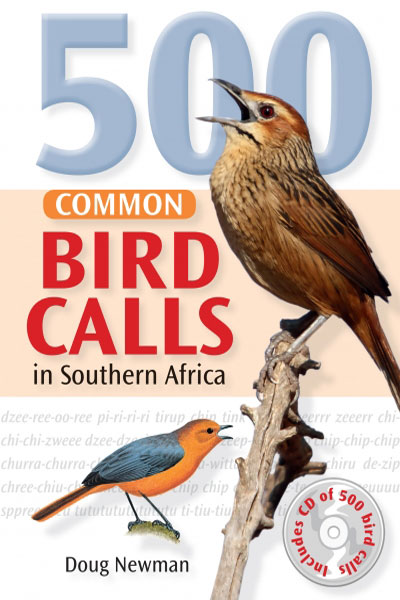 Identify bird calls with this handy guide and CD, which together feature 500 distinctive southern African species. The CD gives the best-known song or call of each species; the book provides clear and accessible text, with a brief account for each species, including a description of the song, associated behaviour, similar-sounding species, the bird’s favoured habitat type, and a distribution map
Identify bird calls with this handy guide and CD, which together feature 500 distinctive southern African species. The CD gives the best-known song or call of each species; the book provides clear and accessible text, with a brief account for each species, including a description of the song, associated behaviour, similar-sounding species, the bird’s favoured habitat type, and a distribution map -
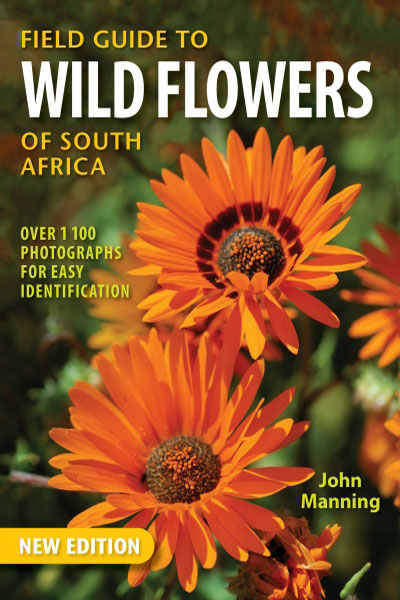 This fully updated edition of Field Guide to Wildflowers of South Africa covers more than 1,100 species of ore, focusing on the most common, conspicuous, and showy plants around the region. An informative introduction discusses plant diversity, vegetation types, and includes a key to identifying plant groups. The species descriptions follow, and each is accompanied by: a vivid photograph; a distribution map showing range, and an indication of the plant.
This fully updated edition of Field Guide to Wildflowers of South Africa covers more than 1,100 species of ore, focusing on the most common, conspicuous, and showy plants around the region. An informative introduction discusses plant diversity, vegetation types, and includes a key to identifying plant groups. The species descriptions follow, and each is accompanied by: a vivid photograph; a distribution map showing range, and an indication of the plant. -
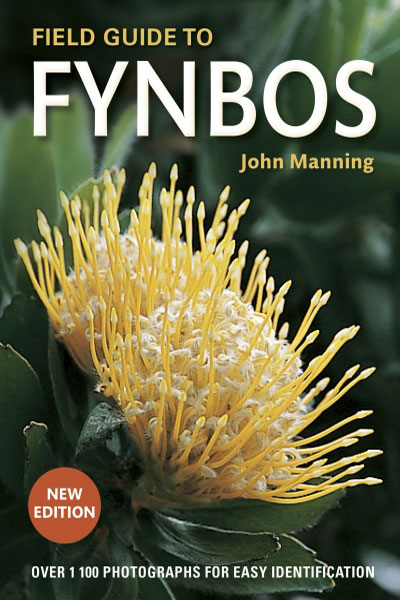 Field Guide to Fynbos features over 1,000 species from the Cape Floristic Region – home to one of the world’s richest floras. This fully updated edition focuses on the most common and ‘showy’ plants. An introduction unpacks the world of fynbos – including origins, diversity, climate, and adaptations and is followed by a photographic key and descriptions of the fynbos families. Species descriptions are accompanied by photographs, distribution maps, comparisons with similar species, and notes on traditional uses.
Field Guide to Fynbos features over 1,000 species from the Cape Floristic Region – home to one of the world’s richest floras. This fully updated edition focuses on the most common and ‘showy’ plants. An introduction unpacks the world of fynbos – including origins, diversity, climate, and adaptations and is followed by a photographic key and descriptions of the fynbos families. Species descriptions are accompanied by photographs, distribution maps, comparisons with similar species, and notes on traditional uses. -
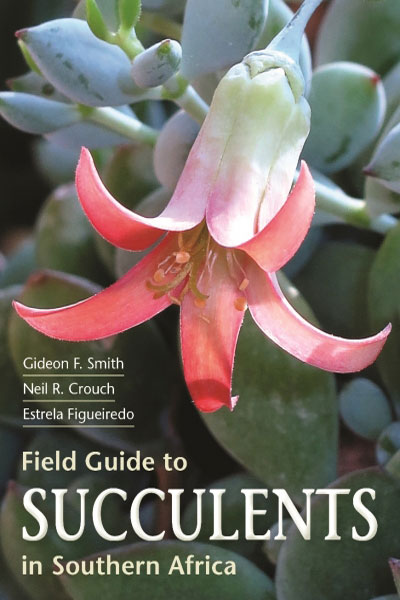 This user-friendly, richly illustrated field guide features more than 700 southern African succulents, focusing on the most interesting and commonly encountered species. An introduction to families and their key features will help readers identify the relevant plant group, while concise accounts describing the plants’ diagnostic features, along with distribution maps, will enable quick ID of species.
This user-friendly, richly illustrated field guide features more than 700 southern African succulents, focusing on the most interesting and commonly encountered species. An introduction to families and their key features will help readers identify the relevant plant group, while concise accounts describing the plants’ diagnostic features, along with distribution maps, will enable quick ID of species. -
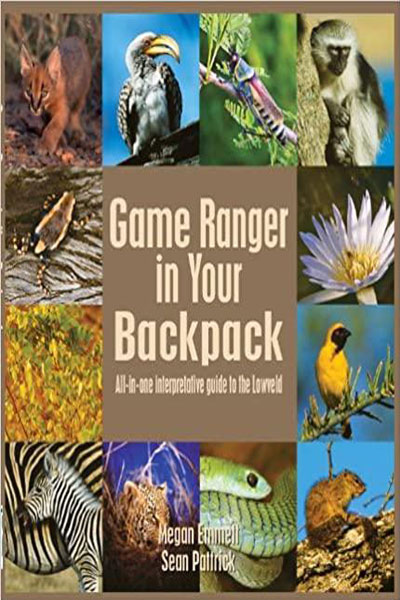 This guide is packed with practical, interpretative information on the most encountered animals and plants of the Lowveld - information that is usually only available if you have a game ranger or field guide by your side in the bush! It teaches people how to observe, identify and interpret what they see in the bush in a meaningful way, without having to wade through the reams of technical information found in most other field guides.
This guide is packed with practical, interpretative information on the most encountered animals and plants of the Lowveld - information that is usually only available if you have a game ranger or field guide by your side in the bush! It teaches people how to observe, identify and interpret what they see in the bush in a meaningful way, without having to wade through the reams of technical information found in most other field guides. -
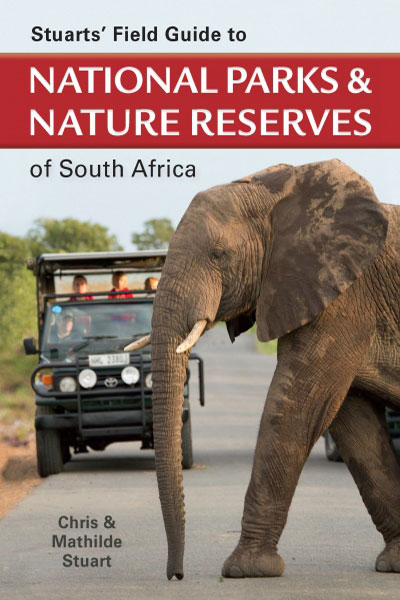 This book is a unique and indispensable guide to the hidden treasures of 43 of South Africa's best and most accessible national parks, nature reserves and wilderness areas. Included are more than 900 photographs, 140 detailed park, locator, provincial and vegetation maps, and a 31-page photographic guide that aids identification of wildlife and vegetation. Organised by province, the conservation areas are comprehensively described, covering history, location, landscape, geology, vegetation, and wildlife.
This book is a unique and indispensable guide to the hidden treasures of 43 of South Africa's best and most accessible national parks, nature reserves and wilderness areas. Included are more than 900 photographs, 140 detailed park, locator, provincial and vegetation maps, and a 31-page photographic guide that aids identification of wildlife and vegetation. Organised by province, the conservation areas are comprehensively described, covering history, location, landscape, geology, vegetation, and wildlife. -
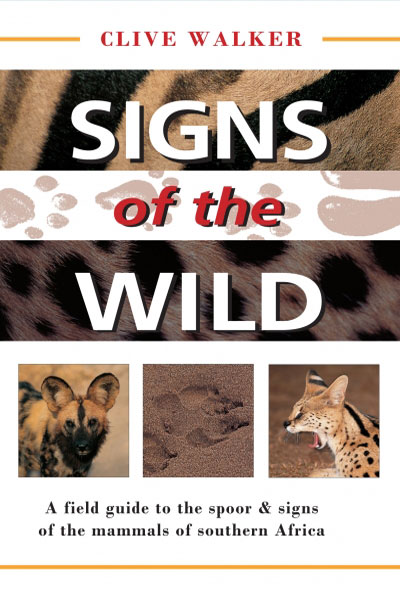 This compact field guide to the identification of Southern African mammals based on their spoor, droppings and skulls has been accepted as the standard work on the subject. This edition offers up-to-date information on identification through signs. This edition provides new illustrations for several species. It also features illustrations of skulls for all the carnivores.
This compact field guide to the identification of Southern African mammals based on their spoor, droppings and skulls has been accepted as the standard work on the subject. This edition offers up-to-date information on identification through signs. This edition provides new illustrations for several species. It also features illustrations of skulls for all the carnivores. -
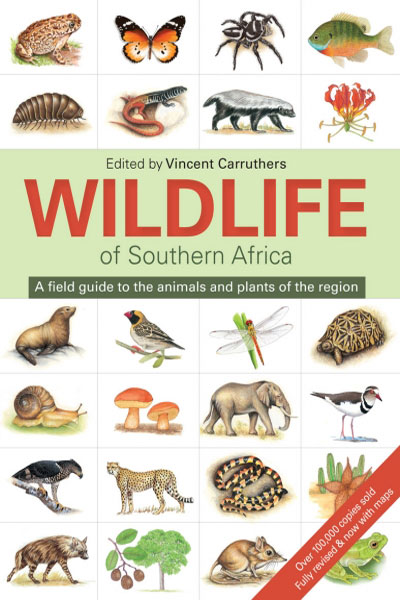 A field guide to the wildlife of southern Africa, describing over 2,000 plants and animals, with accurate illustrations in full colour. This book has been a trusted field companion for many years. Comprehensively updated, it now features range maps for most groups. The chapters are colour-coded for easy reference, and diagnostic features appear in bold type within the descriptions. Each chapter is written by a leading expert in the field. All the main plant and animal groups are covered: Lower invertebrates; Spiders and other arachnids; Insects; Freshwater fishes; Frogs; Reptiles; Birds; Mammals; Grasses, sedges, ferns, and fungi; Wildflowers; Trees.
A field guide to the wildlife of southern Africa, describing over 2,000 plants and animals, with accurate illustrations in full colour. This book has been a trusted field companion for many years. Comprehensively updated, it now features range maps for most groups. The chapters are colour-coded for easy reference, and diagnostic features appear in bold type within the descriptions. Each chapter is written by a leading expert in the field. All the main plant and animal groups are covered: Lower invertebrates; Spiders and other arachnids; Insects; Freshwater fishes; Frogs; Reptiles; Birds; Mammals; Grasses, sedges, ferns, and fungi; Wildflowers; Trees. -
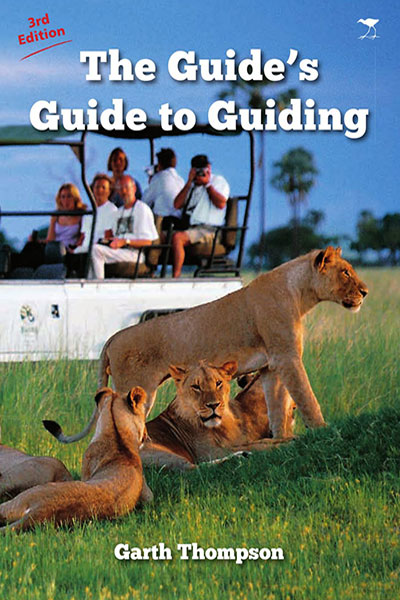 Guides Guide to Guiding Kindle Edition. The Guide's Guide to Guiding is written by veteran wildlife safari guide Garth Thompson and is aimed at informing and educating those that have a love and appreciation for the great outdoors – and a desire to share this passion with others.
Guides Guide to Guiding Kindle Edition. The Guide's Guide to Guiding is written by veteran wildlife safari guide Garth Thompson and is aimed at informing and educating those that have a love and appreciation for the great outdoors – and a desire to share this passion with others. -
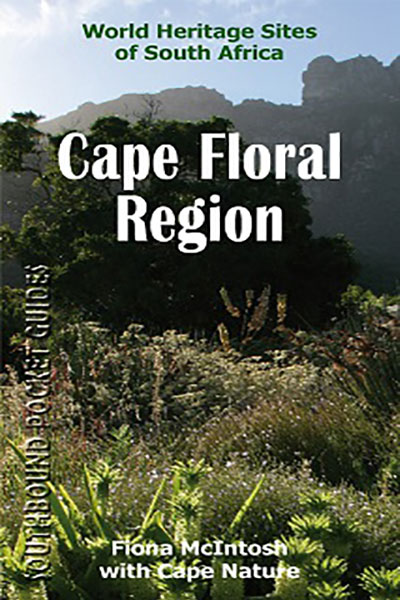 Let Southbound take you to the astonishing floral riches of the Cape - what Carl Linnaeus described as “this Heaven on Earth” - a vast area of mountainous shrubland, dominated by fynbos, and rich in faunal, floral and cultural diversity. The Cape Floral Kingdom is one of the oldest plant kingdoms in the world with some species dating back 60 million years The smallest and richest of the world’s six Floral Kingdoms with a staggering 9,600 flora species, 70% of which occur nowhere else on Earth.
Let Southbound take you to the astonishing floral riches of the Cape - what Carl Linnaeus described as “this Heaven on Earth” - a vast area of mountainous shrubland, dominated by fynbos, and rich in faunal, floral and cultural diversity. The Cape Floral Kingdom is one of the oldest plant kingdoms in the world with some species dating back 60 million years The smallest and richest of the world’s six Floral Kingdoms with a staggering 9,600 flora species, 70% of which occur nowhere else on Earth. -
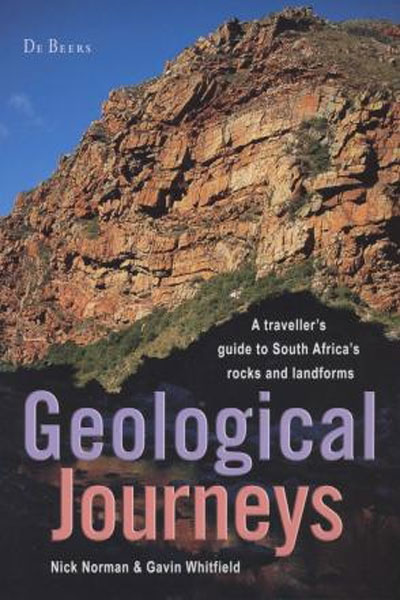 Geological Journeys: a traveller’s guide to South Africa’s rocks and landforms is an essential companion for car journeys. How often have we wondered about the jaunty tilt of a mountain ahead, the unusual patterns of a road cutting, the colour and texture of the roadside soil, or the purpose of a distant Minehead.
Geological Journeys: a traveller’s guide to South Africa’s rocks and landforms is an essential companion for car journeys. How often have we wondered about the jaunty tilt of a mountain ahead, the unusual patterns of a road cutting, the colour and texture of the roadside soil, or the purpose of a distant Minehead. -
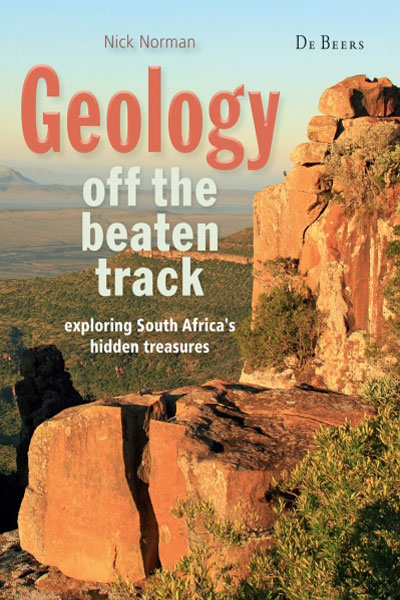 Geology off the beaten track follows on the success of author Nick Norman’s earlier Geological Journeys (co-authored with Gavin Whitfield), which has sold more than 20 000 copies in the last 6 years. This new book helps readers understand and interpret the geology along SA’s regional and other less-travelled roads. It features 13 detailed routes across the country, taking in geologically interesting areas such as the Richtersveld, Cape winelands and the Valley of Desolation near Graaff-Reinet. The text is richly illustrated with photos and explanatory diagrams, making it suitable for armchair travellers too. Maps for all the routes indicate key geosites, with GPS readings to pinpoint their location.
Geology off the beaten track follows on the success of author Nick Norman’s earlier Geological Journeys (co-authored with Gavin Whitfield), which has sold more than 20 000 copies in the last 6 years. This new book helps readers understand and interpret the geology along SA’s regional and other less-travelled roads. It features 13 detailed routes across the country, taking in geologically interesting areas such as the Richtersveld, Cape winelands and the Valley of Desolation near Graaff-Reinet. The text is richly illustrated with photos and explanatory diagrams, making it suitable for armchair travellers too. Maps for all the routes indicate key geosites, with GPS readings to pinpoint their location. -
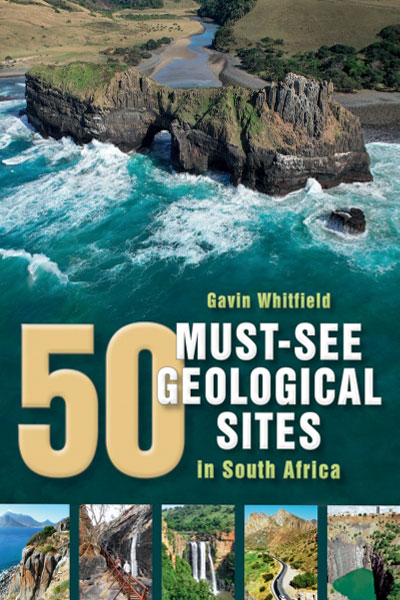 The book presents 50 of the most recognizable and geologically interesting sites around South Africa, including some of palaeontological or historical renown and some of mining interest. The diverse selection includes sites such as Chapman’s Peak, Howick Falls, Walter Sisulu National Botanical Gardens, Mapungubwe, Tswaing Meteorite Crater and the Fraserburg Fossil Surface.
The book presents 50 of the most recognizable and geologically interesting sites around South Africa, including some of palaeontological or historical renown and some of mining interest. The diverse selection includes sites such as Chapman’s Peak, Howick Falls, Walter Sisulu National Botanical Gardens, Mapungubwe, Tswaing Meteorite Crater and the Fraserburg Fossil Surface. -
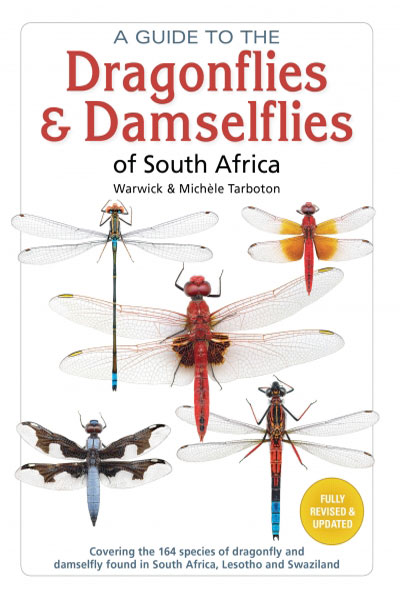 In this fully revised edition of A Guide to the Dragonflies & Damselflies of South Africa, all 164 species known to occur in South Africa, Lesotho and Swaziland are described and illustrated, grouped according to family (six dragonfly and six damselfly families). The species entries feature scans of live insects (close-up and side-view images) and photographs of specimens in their natural environment and showing key behaviours.
In this fully revised edition of A Guide to the Dragonflies & Damselflies of South Africa, all 164 species known to occur in South Africa, Lesotho and Swaziland are described and illustrated, grouped according to family (six dragonfly and six damselfly families). The species entries feature scans of live insects (close-up and side-view images) and photographs of specimens in their natural environment and showing key behaviours. -
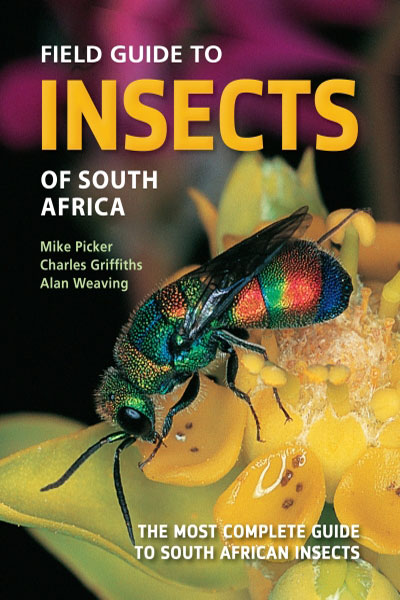 This is an updated and revised edition of the largest, most authoritative field guide to the insect fauna of South Africa, with detailed descriptions and images of some 1,500 of the most common, most economically and ecologically important, and most interesting and attractive insects in the region.
This is an updated and revised edition of the largest, most authoritative field guide to the insect fauna of South Africa, with detailed descriptions and images of some 1,500 of the most common, most economically and ecologically important, and most interesting and attractive insects in the region. -
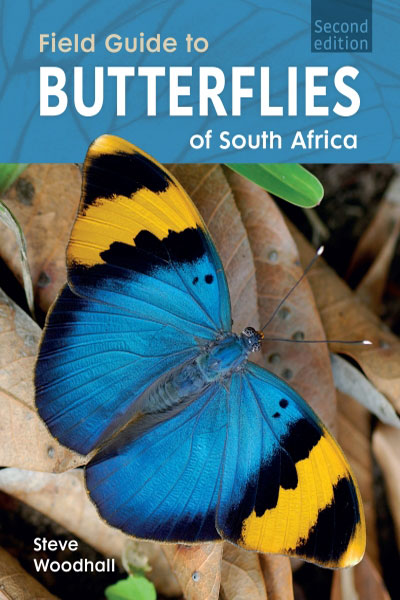 Field Guide to Butterflies of South Africa is designed for easy, rapid identification of all butterflies likely to be seen in South Africa. Following a worldwide trend to butterfly watching, readers are encouraged to observe behaviour rather than collect specimens. A detailed introductory section discusses butterfly biology, behaviour and anatomy, and butterfly families and subfamilies.
Field Guide to Butterflies of South Africa is designed for easy, rapid identification of all butterflies likely to be seen in South Africa. Following a worldwide trend to butterfly watching, readers are encouraged to observe behaviour rather than collect specimens. A detailed introductory section discusses butterfly biology, behaviour and anatomy, and butterfly families and subfamilies. -
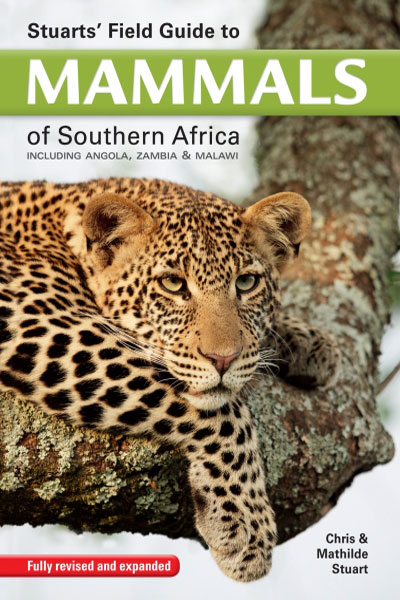 Greater southern Africa has a wealth of mammal species, almost 400 – all of which are covered in this fully updated, comprehensive field guide. Now expanded to include species found in Angola, Zambia, and Malawi, it has also been extensively revised to include: the most recent research and taxonomy, revised distribution maps and many new images.
Greater southern Africa has a wealth of mammal species, almost 400 – all of which are covered in this fully updated, comprehensive field guide. Now expanded to include species found in Angola, Zambia, and Malawi, it has also been extensively revised to include: the most recent research and taxonomy, revised distribution maps and many new images. -
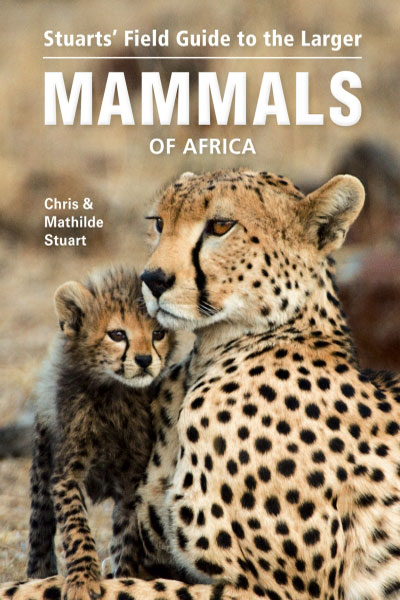 Of the more than 5,500 mammal’s species worldwide, at least 1,200 occur in Africa. Stuarts’ Field Guide to the Larger Mammals of Africa concentrates on the more visible and easily distinguished larger species, as well as some of the more frequently seen smaller mammals. This new edition has been extensively revised, expanded, and redesigned and includes: the most recent research and taxonomy, revised distribution maps and many new images, colour-coded grouping of orders.
Of the more than 5,500 mammal’s species worldwide, at least 1,200 occur in Africa. Stuarts’ Field Guide to the Larger Mammals of Africa concentrates on the more visible and easily distinguished larger species, as well as some of the more frequently seen smaller mammals. This new edition has been extensively revised, expanded, and redesigned and includes: the most recent research and taxonomy, revised distribution maps and many new images, colour-coded grouping of orders. -
 First published in 1986, Smithers' mammals are an authoritative and popular guide to the mammals of Southern Africa. This revised and updated edition incorporates the latest information brought to light by molecular genetics, while remaining accessible to the layperson and handy in the field. Each entry includes an in-depth species description; notes on habitat, behaviour, diet, and conservation status; accurate illustrations and spoor drawings; and a distribution map.
First published in 1986, Smithers' mammals are an authoritative and popular guide to the mammals of Southern Africa. This revised and updated edition incorporates the latest information brought to light by molecular genetics, while remaining accessible to the layperson and handy in the field. Each entry includes an in-depth species description; notes on habitat, behaviour, diet, and conservation status; accurate illustrations and spoor drawings; and a distribution map. -
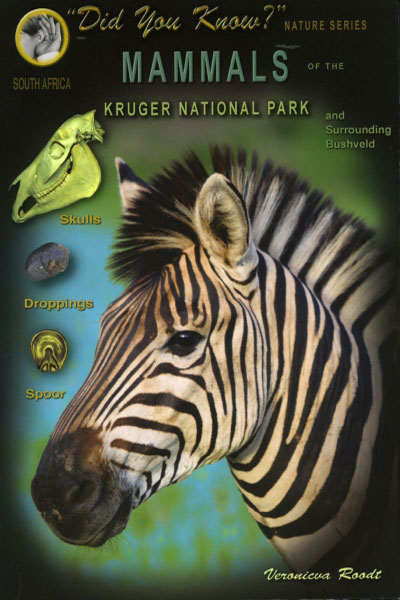 This compact guide to Mammals of the Kruger National Park and Surrounding Bushveld presents all the mammals you are likely to see in the region. Although handy in size, it packs in an astonishing amount of information, with each mammal accompanied by photos, distribution map, skull and dropping images, track illustration, a box giving ID pointers, and fascinating information on physiology, habits and behaviours.
This compact guide to Mammals of the Kruger National Park and Surrounding Bushveld presents all the mammals you are likely to see in the region. Although handy in size, it packs in an astonishing amount of information, with each mammal accompanied by photos, distribution map, skull and dropping images, track illustration, a box giving ID pointers, and fascinating information on physiology, habits and behaviours. -
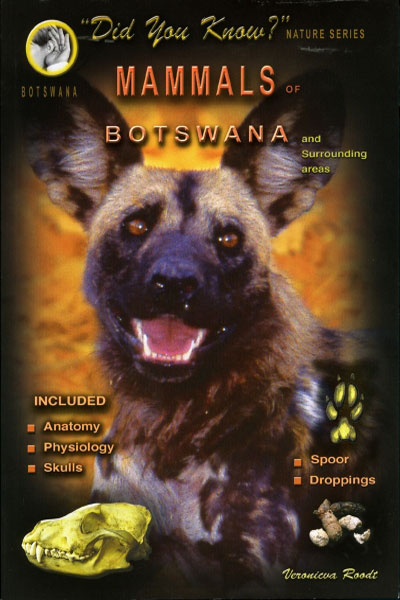 This guide to the mammals of Botswana offers a detailed roundup of more than 80 animals – with maps, travel information and a photographic field guide in a single, handy volume. It covers the six major mammal groups: non-ruminants, ruminants, carnivores, non-carnivorous small mammals, rodents and shrews, and bats – in colour-coded sections for quick reference, and with animal names in seven languages.
This guide to the mammals of Botswana offers a detailed roundup of more than 80 animals – with maps, travel information and a photographic field guide in a single, handy volume. It covers the six major mammal groups: non-ruminants, ruminants, carnivores, non-carnivorous small mammals, rodents and shrews, and bats – in colour-coded sections for quick reference, and with animal names in seven languages. -
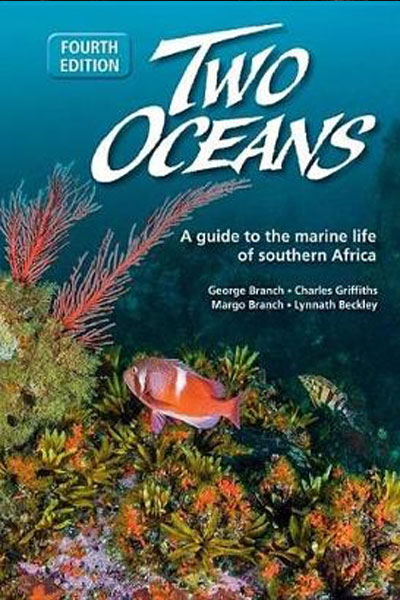 For over two decades Two Oceans has been the pre-eminent book to which scientists, students, divers, and beachcombers turn to identify and learn about marine life, from sponges to whales and seaweeds to dune forests. In this exuberantly colourful, fully revised fourth edition, over 2 000 species are now covered, names and other details have been updated to reflect the latest taxonomy and many new photographs have been added.
For over two decades Two Oceans has been the pre-eminent book to which scientists, students, divers, and beachcombers turn to identify and learn about marine life, from sponges to whales and seaweeds to dune forests. In this exuberantly colourful, fully revised fourth edition, over 2 000 species are now covered, names and other details have been updated to reflect the latest taxonomy and many new photographs have been added. -
 The prehistoric record of southern Africa extends back some 2 million years. The oldest cultural artefacts are stone tools such as hand axes, cleavers, and choppers. In more recent centuries, archaeologists have found an extensive repertoire of artefacts including not only stone tools, but tools of bone, wood and shell as well as beads, jewellery, grinding stones, clothing, fishing equipment, burials and southern Africa's enigmatic rock art.
The prehistoric record of southern Africa extends back some 2 million years. The oldest cultural artefacts are stone tools such as hand axes, cleavers, and choppers. In more recent centuries, archaeologists have found an extensive repertoire of artefacts including not only stone tools, but tools of bone, wood and shell as well as beads, jewellery, grinding stones, clothing, fishing equipment, burials and southern Africa's enigmatic rock art.

